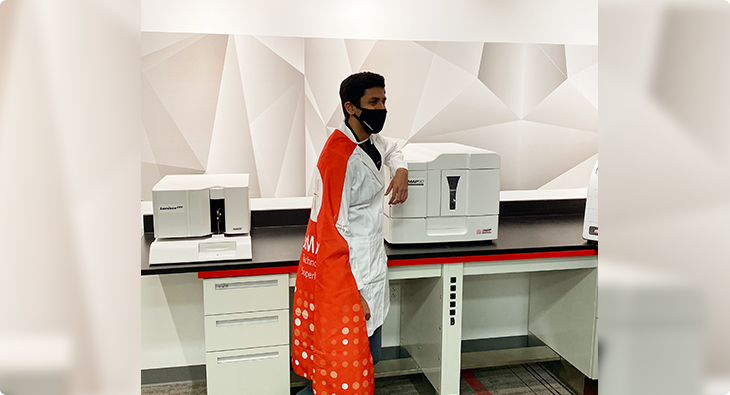Luminex interns share what they wish people knew about multiplexing
Scientists who use xMAP® Technology deploy it for a broad range of applications. But there’s one thing they all have in common: at some point, they were all new to the platform and had to learn how to use it for the first time.

To help emerging scientists bridge the gap from college to careers in the life sciences, we offer an internship program in our LuminexPLORE custom assay development lab, where we introduce our interns to xMAP Technology. They’ve already become pros in the short time they’ve been here, and they have made valuable contributions to projects while helping turn our clients’ dream assays into reality.
We recently spoke with Atharwa Mankame and Katie O’Connor, both graduating seniors at The University of Texas at Austin this spring, to learn more about their experiences and what they learned as new xMAP users. They gave us some insight into their introductions to bead-based multiplexing.
Learning about xMAP Technology
“[Multiplexing] lets you maximize the usage of each sample to make sure you’re getting the most out of what you have.”
Both interns were unfamiliar with xMAP Technology when they started, but they got up to speed quickly and discovered the value of multiplexing. “You use less resources and you save a lot of time. Multiplexing helps you finish everything faster,” Mankame said. “If you want to test for one target in one sample on an ELISA, that takes maybe six hours. But if you have 10 targets to run in triplicate, that’s two weeks of testing versus one day for xMAP.” That capacity resonated with him since he had previously run several singleplex ELISAs in his university lab, where the process took an entire month. “With multiplexing in the LuminexPLORE lab, we’re doing four plexes every two hours,” he said.
According to O’Connor, multiplexing is “also really nice for consistency, particularly for limited volume samples. It lets you maximize the usage of each sample to make sure you’re getting the most out of what you have.” She noted that the ability to design custom assays is also valuable.
Hands-on experience in the LuminexPLORE lab
The interns learned through firsthand experience how multiplexing reduces time at the bench, freeing up each scientist to spend more time analyzing results and planning future experiments. “The best part about the LuminexPLORE lab is that it only takes an hour to prep your project, and then you have the rest of the day to analyze your data, talk to clients, and take care of other tasks,” Mankame said.
Tips and tricks from the lab
We also asked the interns about the best tricks they’d learned. “Vortex and sonicate to maintain even distribution of beads in solution and maximize contact surface area and accuracy of assays,” O’Connor told us.
“Pre-wet your tips to maintain consistency during aspiration,” Mankame said.
“The best part about the LuminexPLORE lab is that it only takes an hour to prep your project, and then you have the rest of the day to analyze your data, talk to clients, and take care of other tasks.”
Both interns enjoyed their time and education in the LuminexPLORE lab. “It’s been really cool working with people who developed xMAP Technology and helping to optimize assays for scientists who are using these platforms,” O’Connor said.
Whether you’re an intern or an experienced researcher, we have multiple resources to help you get started with xMAP Technology or explore custom assay development. Our xMAP Cookbook is a free collection of methods and protocols for developing your own assays, and is available for download here. To learn more about LuminexPLORE Lab, our custom services program designed to help accelerate your research, click here.
Learn more about LuminexPLORE Lab, our custom services program.
For Research Use Only. Not for use in diagnostic procedures.
Related Content
- Getting Started with xMAP® Technology [Video]
- View the xMAP Multiplexing Blog Series [Video]
- xMAP® Cookbook to Design Your Own Assays [Download]
- Browse 1,200+ Partner Kits with xMAP® Kit Finder [Online Tool]